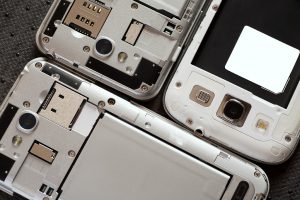 A new Canadian e-plastics processor, CRT troubles, a processor lawsuit and Basel Action Network’s export-tracking project drew readers’ interest last month.
A new Canadian e-plastics processor, CRT troubles, a processor lawsuit and Basel Action Network’s export-tracking project drew readers’ interest last month.

E-Scrap News magazine is the premier trade journal for electronics recycling and refurbishment experts. It offers updates on the latest equipment and technology, details trends in electronics recycling legislation, highlights the work of innovative processors, and covers all the other critical industry news.
Sign up for our free weekly e-newsletters to receive the latest news directly.
 A new Canadian e-plastics processor, CRT troubles, a processor lawsuit and Basel Action Network’s export-tracking project drew readers’ interest last month.
A new Canadian e-plastics processor, CRT troubles, a processor lawsuit and Basel Action Network’s export-tracking project drew readers’ interest last month.
 European coalitions representing electronics manufacturers have launched an internet-based information service designed to help processors better recycle devices.
European coalitions representing electronics manufacturers have launched an internet-based information service designed to help processors better recycle devices.
 A Singapore leader says the small Southeast Asian country will implement extended producer responsibility for electronics by 2021.
A Singapore leader says the small Southeast Asian country will implement extended producer responsibility for electronics by 2021.
Document Security Services (Div of ORS, Inc.) of Durham, N.C.; Ohio Mobile Shredding of Columbus, Ohio and Shred Monster of Columbus, Neb. have either achieved or renewed their NAID certifications for physical destruction of hard drives.
Visit our archive to view previous editions of the scorecard.
 The European Union will provide funding to help formalize e-scrap recycling in a West African country that has been at the center of heated material export debates.
The European Union will provide funding to help formalize e-scrap recycling in a West African country that has been at the center of heated material export debates.

Total Reclaim was fined by state regulators for storing flat-panel display devices in trailers on Seattle’s Harbor Island.
No longer receiving material from state electronics recycling programs in Washington and Oregon, processor Total Reclaim is attempting to weather recent regulatory hurdles and set its sights on future growth.
 The second half of 2017 saw e-scrap revenues rise for Sims Recycling Solutions, while profits fell due to European market pressures.
The second half of 2017 saw e-scrap revenues rise for Sims Recycling Solutions, while profits fell due to European market pressures.
 A lithium-ion battery expert says smartphone reuse trends will hamper the ability to use mobile device batteries as a major source of cobalt.
A lithium-ion battery expert says smartphone reuse trends will hamper the ability to use mobile device batteries as a major source of cobalt.
Richards & Richards of Nashville, Tenn. and ShredSmart of Prospect, Conn. have achieved their NAID certifications for physical destruction of hard drives.
Visit our archive to view previous editions of the scorecard.
 The Secure E-Waste Export and Recycling Act (SEERA) is just the latest attempt to enact unnecessary legislation to restrict the export of used electronic products.
The Secure E-Waste Export and Recycling Act (SEERA) is just the latest attempt to enact unnecessary legislation to restrict the export of used electronic products.
